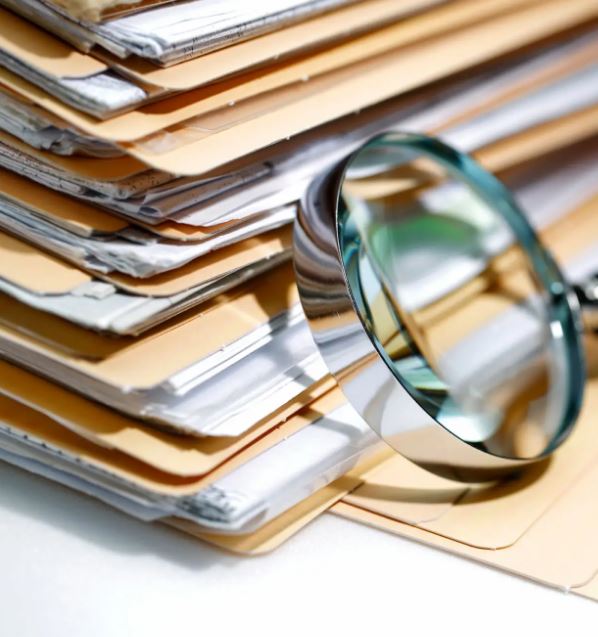In both personal and professional finance, maintaining organized records is crucial for accountability, contingency planning, and compliance with legal obligations. However, without a structured approach, the process of managing financial documents can quickly become overwhelming. This article outlines key strategies for building an efficient, secure, and sustainable financial record-keeping system.
Identify Essential Records for Retention
The first step in creating a robust record-keeping system is identifying which documents need to be retained based on legal requirements and potential future needs. For individuals, this may include tax returns, bank and investment statements, pay stubs, medical bills, insurance policies, receipts for major purchases, and personal contracts.
Businesses, on the other hand, must store documents such as financial statements, general ledgers, accounts receivable/payable reports, payroll records, W-9s, 1099s, and other tax-related forms. Regulatory standards or audits may also require organizations to retain these records for specific periods, making it essential to stay informed about compliance guidelines.
Develop a Logical Organizational Structure
Once you’ve determined which records to keep, the next step is to create an intuitive organizational structure. Establishing primary categories—such as Banking, Taxes, Assets, and Insurance—can make sorting documents easier. For each category, you can further organize by year or specific subtopics.
Incorporate this same structure across both physical and digital records to maintain consistency. Physical files may be sorted into color-coded folders for quick access, while digital documents can be stored in well-labeled folders on cloud platforms or external drives. The key is to design a system that makes retrieving any record easy and efficient.
Prioritize Security and Controlled Access
When managing financial data, safeguarding sensitive information should be a top priority. For physical documents, consider storing them in a locking file cabinet or safe. Digital files should leverage cloud storage systems that provide encryption, multi-factor authentication (MFA), and role-based access permissions to protect against unauthorized access.
Regular backups are also essential to prevent data loss. Use automated cloud backups or external hard drives to ensure that critical financial information remains recoverable in the event of hardware failure or cybersecurity incidents. Implementing security protocols protects both personal and business interests, maintaining the integrity of your records over time.
Implement Efficient Filing and Retrieval Processes
After creating the framework for your record-keeping system, focus on integrating efficient processes for managing incoming documents. Set up a designated area or bin for new physical documents and schedule regular filing sessions—weekly or monthly—to prevent backlogs.
For digital records, mobile scanning apps offer a convenient way to upload documents in real time. Automating uploads to cloud storage platforms or setting up email filters to route invoices and statements directly to designated folders can further streamline operations. These processes keep the system running smoothly and minimize the time spent on administrative tasks.
Establish Clear Record Retention Policies
Knowing how long to retain certain records is critical for staying compliant and organized. Tax-related documents, for example, may need to be kept for three to seven years, while loan agreements, property deeds, and contracts might require longer storage.
Develop a retention schedule outlining how long different documents should be kept and when they can be safely disposed of. At the end of each year, conduct an archive session to move older records to storage or dispose of documents no longer needed. For sensitive materials, use secure shredding or permanent deletion methods to protect privacy and prevent data breaches.
Evaluate and Update the System Regularly
No financial record-keeping system is static. Changes in personal circumstances, business operations, regulatory requirements, or technology may necessitate adjustments. Periodically assess your system’s effectiveness to ensure it remains aligned with current needs.
Introducing new tools—such as upgraded scanning software or more secure cloud storage—can improve efficiency. Likewise, staying informed about changes in tax laws and compliance standards helps you maintain a system that meets both personal and professional obligations. Regular evaluations ensure that your record-keeping framework continues to serve its purpose effectively.
Benefits of a Well-Organized Record-Keeping System
While creating and maintaining a financial record-keeping system requires an initial investment of time and effort, the benefits are substantial. An organized system saves time during tax season, facilitates smoother audits, ensures compliance, and provides easy access to critical documents when needed. For businesses, efficient record-keeping also supports better decision-making and financial management, helping to avoid costly mistakes or missed deadlines.
Whether managing personal finances or overseeing a business’s accounts, an effective record-keeping system keeps you in control, reduces stress, and fosters financial preparedness. In both scenarios, a well-organized framework allows you to respond quickly to unexpected events or information requests, ensuring you remain on top of your financial responsibilities.
Establishing a financial record-keeping system may seem daunting at first, but the rewards far outweigh the effort. By identifying essential documents, developing a logical structure, prioritizing security, and implementing efficient processes, individuals and businesses can maintain organized and secure records. Regular updates and adherence to retention policies ensure that the system evolves with changing needs and remains optimized over time.
Ultimately, an effective financial record-keeping system promotes accountability, compliance, and peace of mind. With a methodical approach, you can take control of your finances and position yourself for long-term success—whether in personal life or business operations.


 Economics1 week ago
Economics1 week ago
 Economics1 week ago
Economics1 week ago
 Blog Post6 days ago
Blog Post6 days ago
 Accounting1 week ago
Accounting1 week ago
 Personal Finance1 week ago
Personal Finance1 week ago
 Economics7 days ago
Economics7 days ago
 Personal Finance1 week ago
Personal Finance1 week ago
 Accounting1 week ago
Accounting1 week ago






















